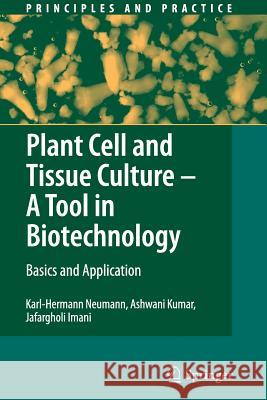Plant Cell and Tissue Culture - A Tool in Biotechnology: Basics and Application » książka
Plant Cell and Tissue Culture - A Tool in Biotechnology: Basics and Application
ISBN-13: 9783642101021 / Angielski / Miękka / 2010 / 333 str.
Plant Cell and Tissue Culture - A Tool in Biotechnology: Basics and Application
ISBN-13: 9783642101021 / Angielski / Miękka / 2010 / 333 str.
(netto: 790,08 VAT: 5%)
Najniższa cena z 30 dni: 792,68
ok. 22 dni roboczych
Bez gwarancji dostawy przed świętami
Darmowa dostawa!
The adv antages of those systems are counterbalanced by some important dis- vantages. For one, in heterotrophic and mixotrophic systems high concentrations of organic ingredients are required in the nutrient medium (particularly sugar at 2% or more), associated with a high risk of microbial contamination. How, and to which extent this can be avoided will be dealt with in Chapter 3. Other disadvantages are the difficulties and limitations of extrapolating results based on tissue or cell c- tures, to interpreting phenomena occurring in an intact plant during its development. It has always to be kept in mind that tissue cultures are only model systems, with all positive and negative characteristics inherent of such experimental setups. To be realistic, a direct duplication of in situ conditions in tissue culture systems is still not possible even today in the 21st century, and probably never will be. The organization of the genetic system and of basic cell structures is, however, essentially the same, and therefore tissue cultures of higher plants should be better suited as model s- tems than, e.g., cultures of algae, often employed as model systems in physiological or biochemical investigations. The domain cell and tissue culture is rather broad, and necessarily unspecif ic. In terms of practical aspects, basically five areas can be distinguished (see Figs. 1.1, 1.2 ), which here shall be briefly surveyed before being discussed later at length.











